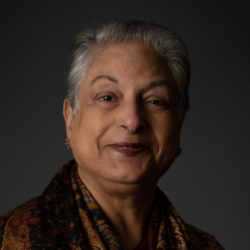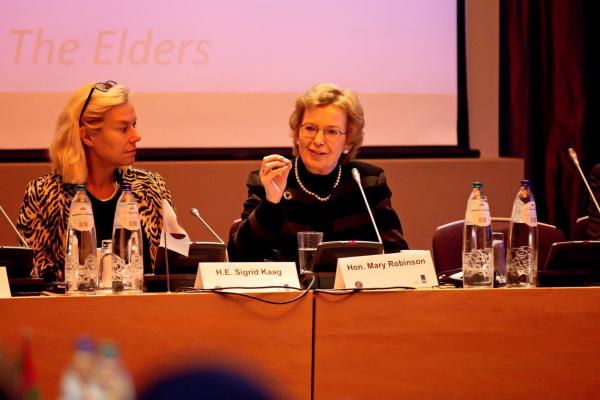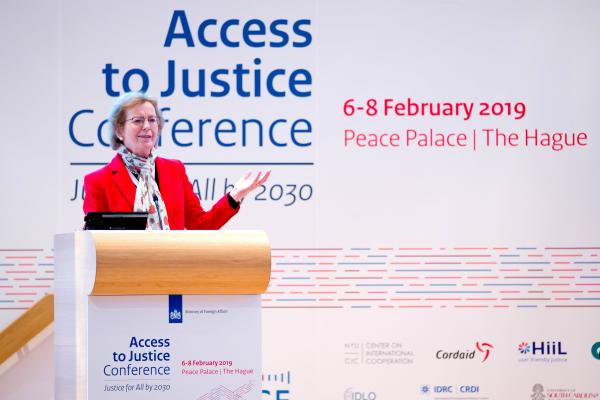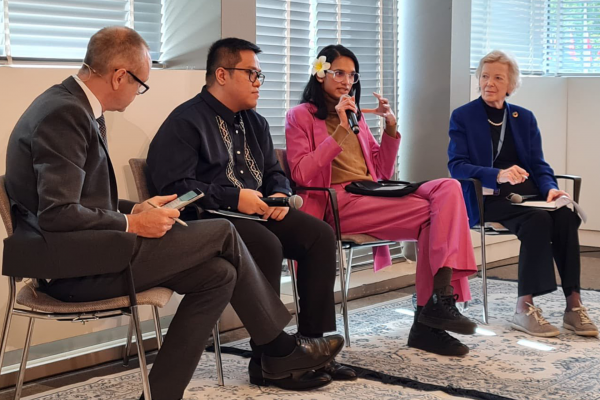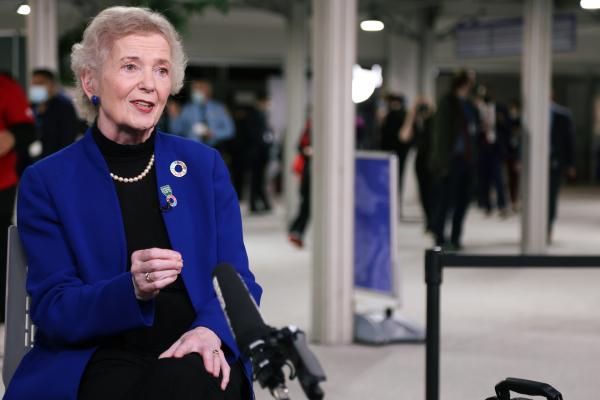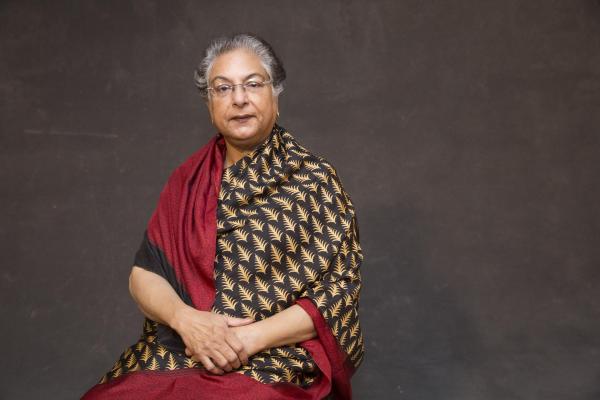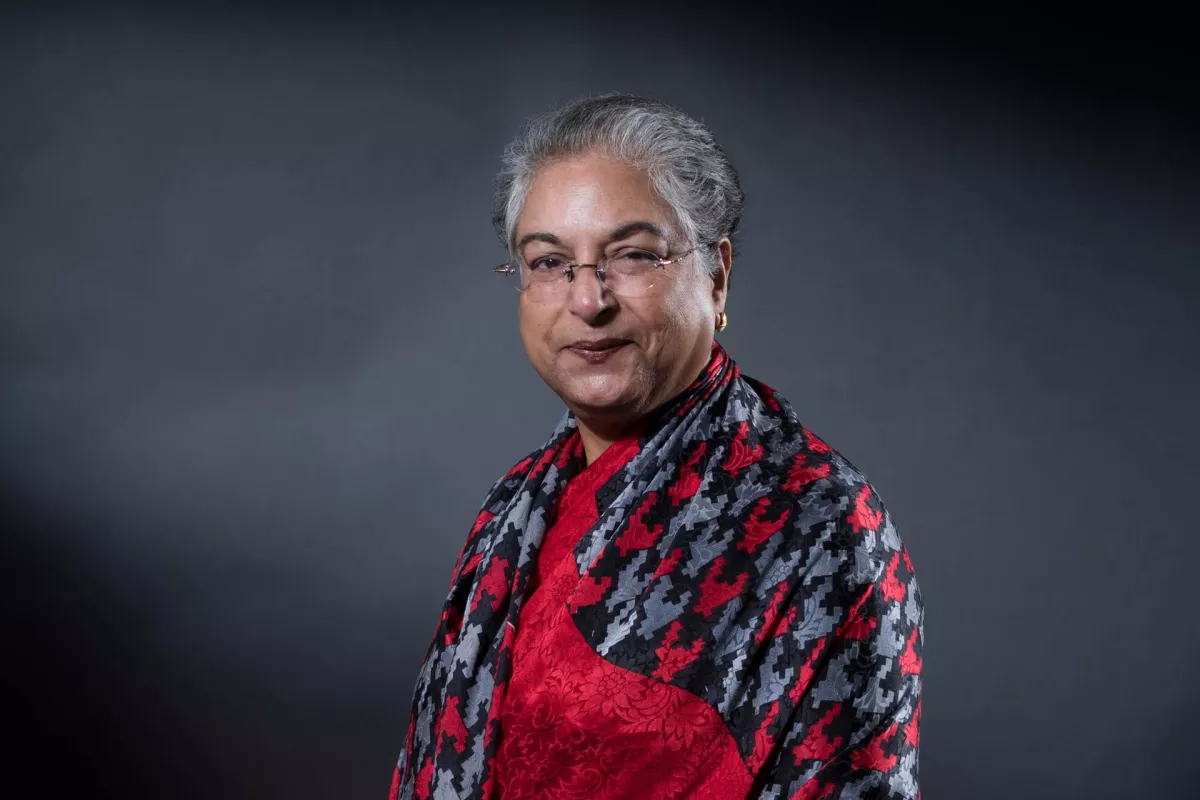
Launching the Justice For All Report, Hina Jilani outlines three key actions required to bridge the justice gap experienced by 5.1 billion people across the world.
This speech was delivered at the 8th Asia Pro Bono Conference, in Kathmandu, Nepal, on 13 September 2019.
It is a pleasure to be with you here today for the launch of the Justice for All Report at the Asia Pro Bono Conference. I had the privilege to contribute to the report as a co-chair of the Task Force on Justice, representing The Elders.
The Elders are a group of global leaders brought together by Nelson Mandela. We launched an Access to Justice programme in February, adding our voice and leadership to stand alongside those who pioneer access to justice both at the global and local levels.
I have been a fighter for justice my whole life: justice for women, for victims of abuse, persecution and political oppression, for poor, vulnerable and marginalised communities, and for brave human rights defenders. The Justice for All Report encompasses this largeness of purpose, of fundamentally moving the needle towards justice.
The Task Force on Justice, which authored the Report, was launched in February 2018. It is co-chaired by the Ministers of Justice for Argentina and Sierra Leone, Netherlands’ Minister for International Development and myself. The Task Force’s membership includes experts and practitioners from around the world. The Justice for All Report leveraged this wide range of justice partners and their on-the-ground expertise to present a forward-looking agenda -- one that is focused on justice solutions.
The Justice for All Report calls attention to the fact that the world’s justice systems are currently not meeting the justice needs of women, men and children. The Report provides new data on the scale of the justice gap. It found that 5.1 billion people lack meaningful access to justice. These people fall into one or more of three groups:
- 4.5 billion, who are excluded from the social, economic and political opportunities that the law provides
- 1.5 billion, who have a criminal, civil, or administrative justice problem they cannot solve
- 253 million, who live in extreme conditions of injustice, without any meaningful legal protections
These statistics represent a staggering denial of fundamental rights.
At the same time, these numbers represent lost opportunities and unnecessary costs incurred. The Report estimates that people with justice problems lose an average of one month’s wages while everyday justice problems cost countries 0.5% to 3% of their GDP. Significantly, every dollar invested in justice actually leads to $16 in benefits from reduced conflict risk.
What is the way forward, then? The Report lays out a three-part agenda.
One, there is a need to place justice at the heart of sustainable development. Justice is a thread that runs through all 17 Sustainable Development Goals. Without increased justice, the world will be unable to end poverty, reduce inequality and reach the furthest behind first. It will struggle to create conditions for shared, sustainable prosperity or truly promote peace, inclusion and fundamental rights.
Two, we must put people at the centre of justice systems. We must understand how women, men and children experience justice and injustice, draw on evidence of what works to meet people’s justice needs and make sure it is delivered by an inclusive justice system open to partnership with other sectors.
Three, there has to be a movement from justice for the few to justice for all per Sustainable Development Goal 16.3. Closing the justice gap requires a transformation in ambition – a sustained effort to provide billions more people with access to justice to help resolve their justice problems, prevent injustices large and small and creating opportunities for people to fully participate in their societies and economies.
To resolve people’s justice problems, we need to empower people and communities. We need systems that provide fair outcomes.
To do this we need to a range of actors from both within and beyond what we commonly think of as the justice system, to work together to provide equal access to justice for all, as the SDGs promise.
In order to realise the vision of equal access to justice for all, we need to scale up and improve the quality of pro bono assistance. Bar associations, lawyers and universities have a fundamental role to play and we need to be open to embracing innovation, technology and supporting the role of non-lawyers in expanding access to justice.
One non-traditional provider that I believe has been underappreciated as a partner in delivering justice goals is the civil society. The Elders have a strong belief in engaging with and enlisting the support of civil society in expanding access to justice, and the Task Force report underlines the importance of this.
Citizens cannot always navigate complex legal systems by themselves, and they can’t always afford lawyers to help them navigate. Civil society actors, such as advocacy groups or community paralegals, help fill that gap. They advise citizens where they can access support and help them to find timely, practical solutions to their problems.
Civil society also has a role in drawing attention to the structural injustices that damage communities, and can be a powerful source of advocacy in holding governments and businesses to account for injustice.
The Elders, therefore, call on governments to recognize, finance and protect justice defenders and enable them to contribute to providing equal access to justice for all.
I often refer to the example of Indonesia, which has been a pioneer in this area. The country’s national legal aid law, adopted in 2011, recognizes the central role of paralegals and legal aid offices in providing justice, and also provides public funding to build the capacity of civil society organizations. Indonesia now has up to 6,000 grassroots justice defenders working to empower local communities.
The Justice for All Report notes other examples in Asia of taking different paths for justice results.
Our host country, Nepal, has adopted community-based mediation. Alternative dispute resolution models – with adequate safeguards – are faster and more cost-effective than formal litigation. The average cost per successfully resolved case of a community-based mediation program in Nepal was 28% lower than cases resolved by the formal justice sector. Just mechanisms that deliver results faster and cheaper increases access to justice for all.
Taking justice closer to the people allows for earlier intervention and de-escalation of disputes. In Bangladesh, expanded access to village courts found a positive benefit/cost ratio for petitioners. Currently undergoing a wider study for potential scale-up, this initiative suggests a path to justice for marginalized rural communities.
Later this month, world leaders will meet at the UN General Assembly at the SDG Summit in New York. It is an opportunity for member states to come with concrete commitments to increase access to justice for all per SDG 16.3. The vital work of this audience is a part of that. Not only for your advocacy to governments to expand legal services, but also in the work you do everyday to legally empower those who currently lack agency and a voice of their own.
I challenge us all to establish a broad coalition of justice actors in Asia, that includes members of the judiciary, bar associations, legal service providers and community paralegal organisations, that commit to a people-centred approach to access to justice and to dedicate resources to realise the ambition laid out in the Task Force for Justice report.
Together, we can work to bridge the 5.1 billion justice gap and leave no one behind.

